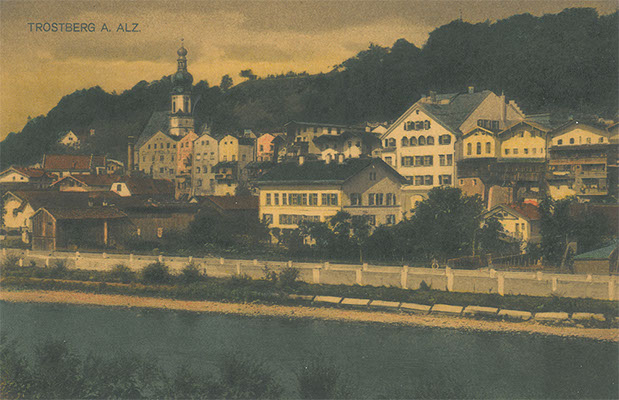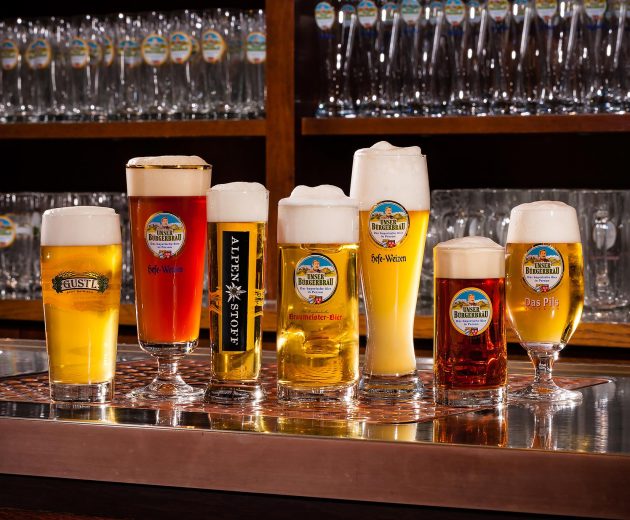
That's how it used to be
The history and lineage of this house goes back more than 350 years as a brewery tavern and we can go back at least one or two centuries further to the age of the building itself.
It was not built and used as a tavern right from the start. Until the end of the 16th century, it was the home and workplace of master baker Georg Wattenlochner. In front of his bakery store, he had a tall, four-sided central market tower with a lantern on top. In 1595, this historic tower had become so dilapidated that it collapsed. The market magistrate had no money to put it up again.



The master baker Wattenlochner then offered to have the tower rebuilt at their expense in return for the granting of “privileges” and the right to serve beer on their property.

The central market tower was built according to the promise and Trostberg had another brewery and pub at the same time as its existing ones: the “Pfau-Bräu”.


However, the house did not bear this name from the beginning, it only came about when the property was sold to Nikolaus Pfaab in 1708. From then on it was called “beim Pfaab-Bräu”, which gradually developed into the name “Pfaubräu”.
New brewery owners came and went; in 1922 it was Max Höfter who took over the Pfaubräu from his parents and ran it until the outbreak of the Second World War. In 1939, the Höfter family was forced by the adversity of the times to sell the Pfaubräu estate to the owners of the “Bürgerbräu Bad Reichenhall” brewery, the Röhm brothers. Since then, the property has been owned by the private alpine brewery BÜRGERBRÄU Bad Reichenhall.
The inn was completely renovated in 1952. The restaurant, with its late Gothic vaults, mighty pillars and artistic decor, has been a gastronomic attraction throughout Chiemgau ever since.

Beer enjoyment in the brewery inn




